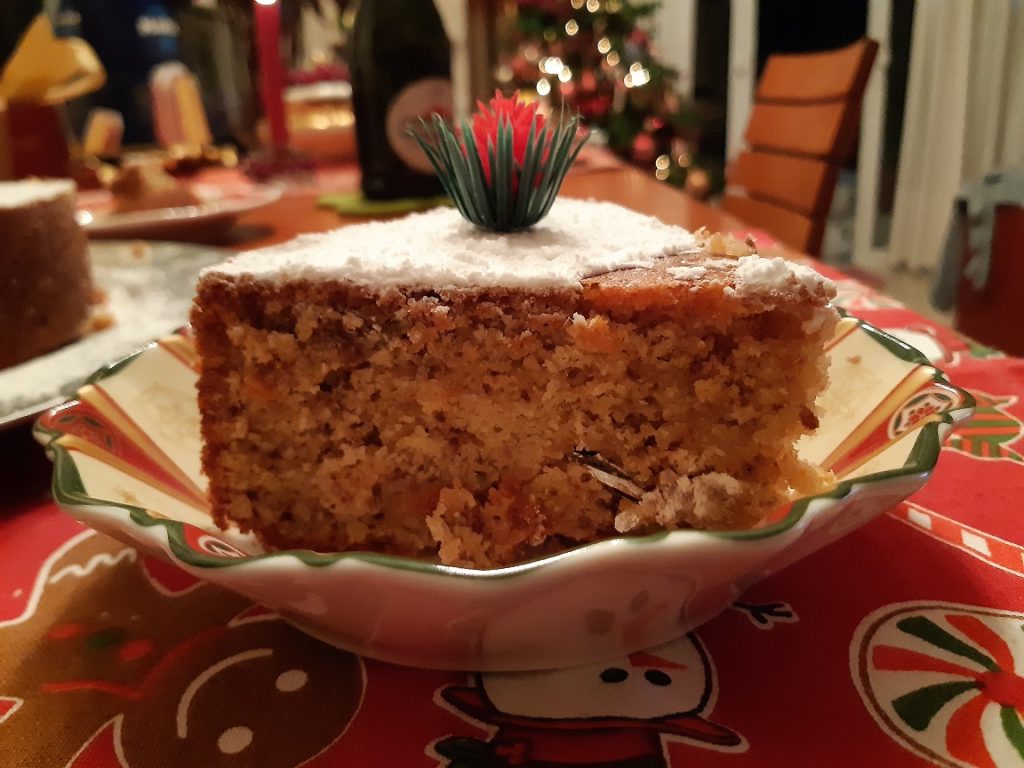On New Year’s Day families cut the “Vassilopita”-“Βασιλόπιτα” to bless the house and bring good luck for the new year. This is usually done at the midnight of New Year’s Eve. A coin is hidden in the bread by slipping it into the cake after baking. A piece of cake is sliced for each member of the family and any visitors present at the time. Whichever find the coin has good luck throughout the year. The word “Vassilopita” is associated to St Basil (“Vassilis”), who is our Santa Claus. HAPPY NEW YEAR.

The Greek New Year’s Day Cake “Vassilopita”
Ingredients
Dough
Decoration
Instructions
-
Using a busting brush, grease a 20 cm round springform cake tin and dust it with flour. Sift the flour and add salt and baking powder to it.
Sifting is optional but breaks up any lumps in the flour and aerates it at the same time by pushing it through a fine strainer. This helps flour to better homogenise with other ingredients and makes the dough fluffier. -
Beat the butter with the sugar with a (hand) mixer until well blended. Stop beating from time to time and scrape down the sides of the mixing bowl.
All ingredients, especially butter and eggs, must be at room temperature! Take care a few hours before. -
Add the eggs, one at a time, waiting for each one to be incorporatet before adding the next. Gradually add the milk, the orange juice (don't worry if the batter temporarily looses its homogeneity), the nuts, the zest, the cognac and mix until all ingredients are incorporated.
-
Slowly add the sifted flour mixture and mix until well blended, leaving you with a fluffy light yellow mix.
Do not over mix! Batter for a short time after adding the flour. -
Place the batter in the cake tin. Bake in a preheated oven (Fan) for 1 hour as follows: 10 min at 160° C, 40 min at 150° C, 10 min at 160° C.
To test that a cake is done, insert a toothpick or paring knife into the center of the cake to see if the crumb has set. If the tester comes out clean, it's done. If it comes out gummy or with crumbs clinging to it, the cake needs more time in the oven. -
Remove from oven. Allow the cake to cool slightly and then take it out of the cake tin, until it cools completely. Dust with icing sugar.
Tip: Instead of simply dusting icing sugar on your cake, you can make drawings or writings using stencils of the shape you want. Choose a decoration, make the stencil with parchment paper, place it on the cake and sprinkle with icing sugar. Carefully remove parchment paper and in a very short time you will get a beautiful decoration.
Notes
- If you want to follow the Greek tradition, wrap a coin with foil and place it somewhere in the cake after you bake it and before serving.
- The idea for this recipe came from Y.Loukakos
- Instead of cognac, you can use a liqueur you like. Amaretto or Triple-Sec is a good alternative.

